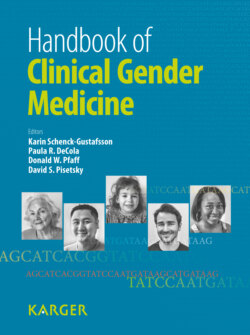Читать книгу Handbook of Clinical Gender Medicine - Группа авторов - Страница 52
Intrauterine Environment and Its Influence on Subsequent Sexuality
ОглавлениеThe development and determination of human sexual orientation is a complex and multicausal process and the ‘nurture-nature controversy’ has not spared human sexuality. For decades or even centuries, homosexuality has been regarded as an ‘acquired disease’. The notion was that homosexuality is either a voluntary deviation from ‘normalcy’ and therefore punishable by society or a disease and therefore amenable to treatment. Psychoanalysis as a treatment mode for homosexuality was developed by Sigmund Freud and advocated by psychologists and psychoanalytics until the 70s of the last century. This was based on the theory that the rejection of a dominant and overpowering father could cause homosexuality in his son. This ‘disease’ theory has been refuted only recently and the ‘nature’ origin of male homosexuality has gained ground. Numerous studies indicate that homosexuality, both in men and in women, may be familial, with genetic transmission accounting for a large proportion of the variance in sexual orientation. However, there may also be epigenetic events during fetal programming which are involved in the development of sexual orientation. Blanchard and Ellis [24] have suggested that the increased odds of homosexuality in later born males are related to the number of earlier born biological brothers and may be linked to a progressive immunization of some mothers to Y-linked minor histocompatibility antigens (H-Y antigens). It has been estimated that one in seven American male homosexuals is gay because of older brothers.
